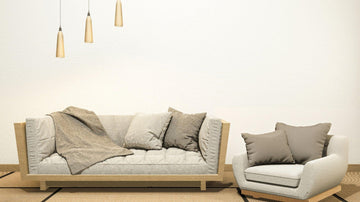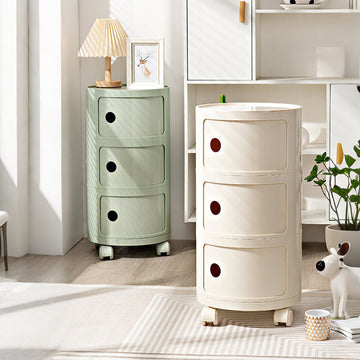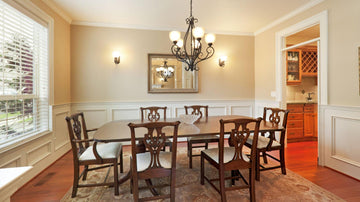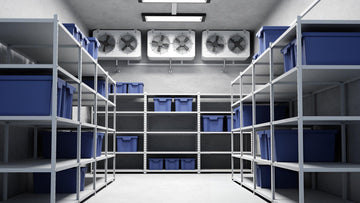Table of Contents
- Introduction
- Understanding the Space: What Solo Apartments Actually Need
- The Living Room: More Than Just a Sofa
- A Bedroom That Feels Like a Break
- A Kitchen That Makes Sense (Even If It’s Tiny)
- Work-from-Home Without Losing Your Mind
- Smart Storage = A Calm Space
- Make It Yours—Without Overdoing It
- Buying Furniture: Spend Wisely, Live Better
- Final Thoughts: Home Is What You Build Into It
When I moved into my first solo apartment, I thought the hardest part would be carrying the boxes upstairs. What actually turned out to be more challenging? Figuring out what to put inside those four walls—and where.
It’s easy to underestimate how tricky it is to furnish a small space for one. You want it to look good, yes, but more than that, you want it to work. When you live alone, your space becomes everything: dining room, lounge, workspace, guest area, and sanctuary.
And when space is limited, every piece of furniture has to pull its weight. This guide is about making decisions that balance comfort, practicality, and personality—without turning your apartment into a storage unit or a showroom.
Understanding the Space: What Solo Apartments Actually Need
Most one-person rentals clock in somewhere between 25 and 40 square meters. That’s enough room to live well—but only if you’re thoughtful about what goes where.
Here’s what I’ve learned:
-
Don’t just shrink everything. A tiny couch doesn’t always make sense. Sometimes one great chair and a bench beat a mini sofa.
-
Go vertical. Think shelves, tall wardrobes, wall hooks. If your floor space is limited, your walls are your best friends.
-
Leave space around things. The temptation to “use every corner” is real. But a little breathing room makes a small home feel bigger.
Before buying anything, ask yourself: What do I actually do here? Do I cook often? Do I work from home? Do I have guests over? Your layout should serve your habits, not some TikTok trend.

The Living Room: More Than Just a Sofa
The living room is usually the first thing you see when you walk in—and in a studio, it might be the only room you have. So, it needs to multitask.
Choosing the Right Seat
Instead of defaulting to a standard sofa, consider what suits you. I once had a two-seater that looked great but was far too deep for my short legs. Eventually, I swapped it for a structured armchair and a wide ottoman. Best decision ever.
A few good options:
-
Compact armchairs: Easier to move, and you can add more later if needed.
-
A chaise lounge: Sits like a chair, stretches like a sofa.
-
Daybeds: Great if you occasionally host overnight guests.
Coffee Table or Something Better?
A lift-top table changed my life. I could eat dinner, work on my laptop, and store blankets—all in one piece. If you don’t need that much, a nesting set or a storage ottoman also works wonders.
Storage and Media
Wall-mounted TV shelves or floating cabinets help save floor space. If you don’t watch TV much, skip the unit entirely and use a projector or laptop stand.
Don’t forget soft elements: a floor lamp in the corner, a textured rug under your feet, and a few throw pillows can make a room feel layered without adding clutter.

A Bedroom That Feels Like a Break
Your bedroom should feel like a signal to relax. But when space is tight, it’s easy to let it become a dumping ground. I’ve been there—clothes on chairs, charger cords everywhere, and a bed that’s half made.
Here’s how I fixed it:
Get the Bed Right
Try to find a frame that has drawers underneath or clearance for storage boxes. Some beds even come with headboards that double as shelves for books, glasses, or your phone charger.
If you’re really short on space, consider a wall bed or a platform with built-in storage.
Maximize the Wardrobe
A floor-to-ceiling closet might sound bulky, but it can actually make the room feel more organized. Use the top shelves for off-season clothes or suitcases, and add drawer inserts inside if possible.
No room for a big wardrobe? A rolling rack covered with a curtain can look surprisingly tidy.
Don’t Skip the Details
A floating nightstand or a narrow side table works perfectly for keeping a lamp and your essentials within reach. I also swear by neutral bedding—it hides wrinkles and matches everything.

A Kitchen That Makes Sense (Even If It’s Tiny)
You don’t need a gourmet setup to cook a decent meal, but you do need your kitchen to be functional. In a small apartment, every drawer, cabinet, and countertop counts.
Small Appliances, Big Impact
A single-burner induction cooktop, a mini oven, or a slimline dishwasher can do wonders. Choose built-in if possible—it looks cleaner and saves space.
Storage Everywhere
Use stick-on hooks, under-shelf baskets, and magnetic strips for knives or spice jars. A fold-out counter extension or a pull-out cutting board adds prep space without taking up room.
Where to Eat?
If there’s no space for a table, a bar-top counter with stools works. Even a wide windowsill can become a breakfast nook with a little imagination.
I once used a drop-leaf table that folded down entirely when not in use. It wasn’t fancy, but it did the job.

Work-from-Home Without Losing Your Mind
Many of us now work from home at least part of the time. And no, your bed or sofa isn’t a long-term solution.
Desk Ideas That Don’t Dominate
A small console table can double as a desk. Wall-mounted drop-down desks are great if you need to reclaim the space after 6 PM. I’ve even used a windowsill plus a bar stool—it wasn’t luxurious, but it gave me a view.
Don’t Skimp on the Chair
A good chair is worth every cent. Get something ergonomic, even if it doesn’t match your aesthetic. Your back will thank you.
Keep It Tidy
Use vertical file holders, under-desk baskets, or rolling carts to keep your supplies from spreading. A desk lamp with a USB port can save you from crawling behind furniture to charge things.
Smart Storage = A Calm Space
Clutter builds up fast when you live alone. One day it’s fine, the next day your place feels like a storage unit. That’s why you need a system.
Use What You Don’t See
-
Under the bed: Flat bins for seasonal clothes or spare linens
-
Above doors: Install a shallow shelf for books or boxes
-
Behind doors: Over-the-door racks for shoes, towels, bags
Go Transparent
Clear containers help you see what you have. Label them if they stack. It speeds up both finding and putting away.
Easy Access Wins
If something takes more than two steps to store, you probably won’t. Make it easy so tidying becomes a habit, not a project.
And once a month, open a drawer and ask, “Do I even use this?” If not, let it go.

Make It Yours—Without Overdoing It
Decorating a solo space is a chance to reflect who you are—without compromise. But it’s easy to go overboard. I’ve learned to keep it simple but intentional.
Pick a Palette
Choose one or two key colors and let them guide your choices. For me, it was dusty blue and warm oak. Everything else fell into place around that.
Add Texture and Life
-
Plants: Even fake ones can soften a room
-
Art: Doesn’t have to be expensive—start with one framed photo you love
-
Lighting: Don’t rely on overheads. Use lamps, sconces, or even fairy lights
Scent Matters More Than You Think
A diffuser, a candle, or even freshly washed sheets can make a room feel like home. It’s a small thing with a big emotional payoff.
Buying Furniture: Spend Wisely, Live Better
You don’t have to buy everything right away. In fact, I’d advise against it. Live in the space first. See what you naturally do. Then buy.
Prioritize
Start with what you need to sleep, sit, and eat. Then slowly layer in storage, lighting, and decorative pieces.
Mix and Match
Pair a secondhand table with a new chair. Combine a high-end lamp with an IKEA shelf. The contrast adds personality.
Think Long-Term
Ask yourself: Will I still want this in two years? Is it sturdy? Can I clean it easily? If the answer is “I’m not sure,” wait.
Final Thoughts: Home Is What You Build Into It
Living alone isn’t about being alone. It’s about choosing how to live—on your terms. Your space should support that.
It doesn’t have to be perfect on day one. In fact, the best homes evolve slowly. They reflect your habits, your growth, your quirks. They change with you.








